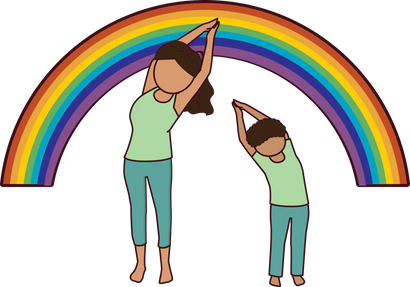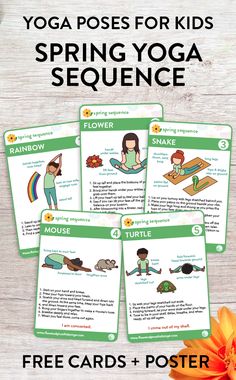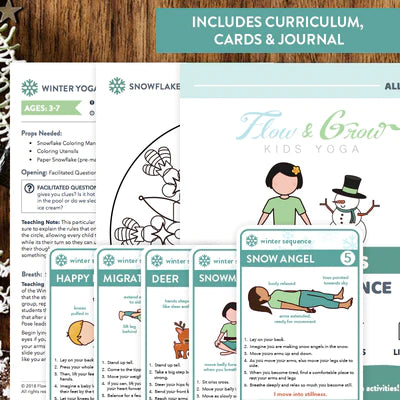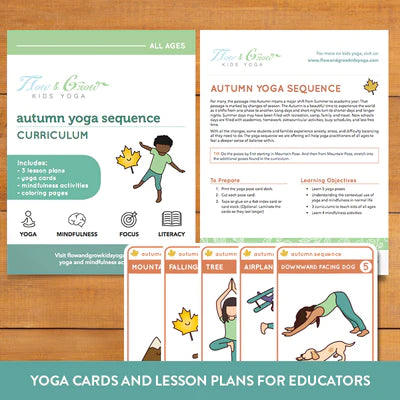Your Cart is Empty
22% off Automatically at checkout when you spend $5 of more!
22% off Automatically at checkout when you spend $5 of more!

Yoga Philosophy Spotlight: Ahimsa or "Non-Violence"
by Lara Hocheiser March 24, 2021 3 min read

The Yamas are the first of the 8 limbs of asthanga yoga. The meaning of yama is right living or ethical rules. You can think about it as taking the reins of your life. Yamas are typically what NOT to do, but for kids, we always flip that to recognize what we ought to do to be ethical.
The first Yama is ahimsa, which means “non-violence” or "non-harming". By acting in a safe, calm, and kind way, we can support our loved ones and wider communities by not harming them -- and ourselves in becoming better, kinder versions of ourselves.
How can we practice ahimsa towards our students in a kids yoga class? It is important to provide multiple forms of inclusion—including visuals, auditory supports, and catering to the needs of each child in a kind way. By allowing children with special needs and various learning styles chances to succeed in learning, we prevent them from feeling bad about themselves for having difficulty with the material (not to mention offering them a greater chance at academic success for everyone!).
By truly listening to kids, we are practicing ahimsa. For one, when we listen we can learn things about how to serve and interact with them in ways that will support them, rather than be hurtful to them. And by listening to them intently, we reduce the risk that they can experience feelings of inadequacy or feeling unseen, unheard, uncared for. When we listen to people, with attentiveness and care, it sends the message that they matter. This is an important message for children, because they are forming their sense of self, which will mold how they think and feel about themselves for the lifespan.

For the well-being and growth of all in the class, it is important for classmates to act with kindness towards each other. Consider engaging in activities where children work with different partners and send each other kind thoughts. In a group reflection, have each student say something kind about another student. This feels good for both the giver and the receiver of the compliment -- demonstrating for students that kindness is good for everyone involved! Another idea is to have children use inclusive, kind language as part of class culture. which you model actively.
Exercises like these are also positive contrasts to instances when students may act unkindly to each other, and thus harm each other; you can remind them of how it felt to give each other compliments, how it feels better -- for everyone involved -- than unkind actions. If unkind behaviors pop up, you can facilitate conversations around how to repair damage between classmates.
For all of these reasons and more, ahimsa is a foundational element by which we can teach our children to be kind and supportive of others. With a little thoughtfulness and leading by example, you can share its power and importance with the children in your life.
Want to learn more about how to teach yoga philosophy to kids in ways that will draw them in and teach them life-affirming lessons they can benefit from for their entire lives? We have resources in our shop for that, for ages 7-11 and tweens/teens!
Check out our Yoga Philosophy for Kids course, as well, which you can take individually or as part of our 95-hour Kids Yoga Teacher Training. Questions, comments, concerns, et cetera? Email the Teacher Trainer Lara Hocheiser at lara@flowandgrowkidsyoga.com, or set up a call with her here! To note: Lara, who leads the above trainings and created the above products, recently spoke on yoga philosophy for kids at the Kids Yoga Conference!
Leave a comment
Comments will be approved before showing up.
Also in Kids Yoga Blog

How Social and Emotional Learning and Yoga Help Kids Breathe Through Big Emotions
by Kane SEO April 21, 2025 4 min read
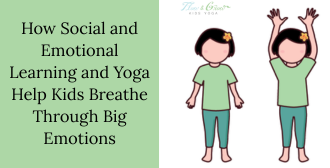
How Social and Emotional Learning and Yoga Help Kids Breathe Through Big Emotions
by Kane SEO April 14, 2025 4 min read
In classrooms and communities around the world, educators and parents alike are placing a growing emphasis onsocial and emotional learning. And for good reason: helping children understand, manage, and express their emotions in healthy ways is just as critical as teaching them to read or do math.

Power of Yoga for Kids: How It Helps Them Grow, Focus, and Thrive
by Kane SEO March 25, 2025 5 min read
In today’s fast-paced world, children are often exposed to stressors from a young age, whether it’s academic pressure, social challenges, or the overwhelming influence of digital devices. This can impact their physical, mental, and emotional well-being.
Ultimate Kids Year of Yoga Bundle
bundlespricey-contentdigital-resourcesearly-childhood-yoga-mindfulnesselementary-yoga-mindfulnesskids-yoga-resourcesmiddle-high-school-yoga-mindfulnessseasonal-yogayoga-cards
Ultimate Kids Year of Yoga Bundle
5 reviews
5.0 / 5.0
(5) 5 total reviews
$45.00
Ultimate Kids Year of Yoga Bundle
5 reviews
5.0 / 5.0
(5) 5 total reviews
$45.00
Kid’s Sun Salutation Yoga Cards
digital-resourcesearly-childhood-yoga-mindfulnesselementary-yoga-mindfulnesskids-yoga-resourcesliteracyunder-15yoga-cards
Kid’s Sun Salutation Yoga Cards
3 reviews
4.33 / 5.0
(3) 3 total reviews
$10.00
Kid’s Sun Salutation Yoga Cards
3 reviews
4.33 / 5.0
(3) 3 total reviews
$10.00
Yamas and Niyamas: Successful Relationships with Self & Others (tweens and teens)
pricey-contentdigital-resourceskids-yoga-resourceslesson-plansmiddle-high-school-yoga-mindfulnessmindfulness
Yamas and Niyamas: Successful Relationships with Self & Others (tweens and teens)
2 reviews
5.0 / 5.0
(2) 2 total reviews
$49.00$55.00
Yamas and Niyamas: Successful Relationships with Self & Others (tweens and teens)
2 reviews
5.0 / 5.0
(2) 2 total reviews
$49.00$55.00
